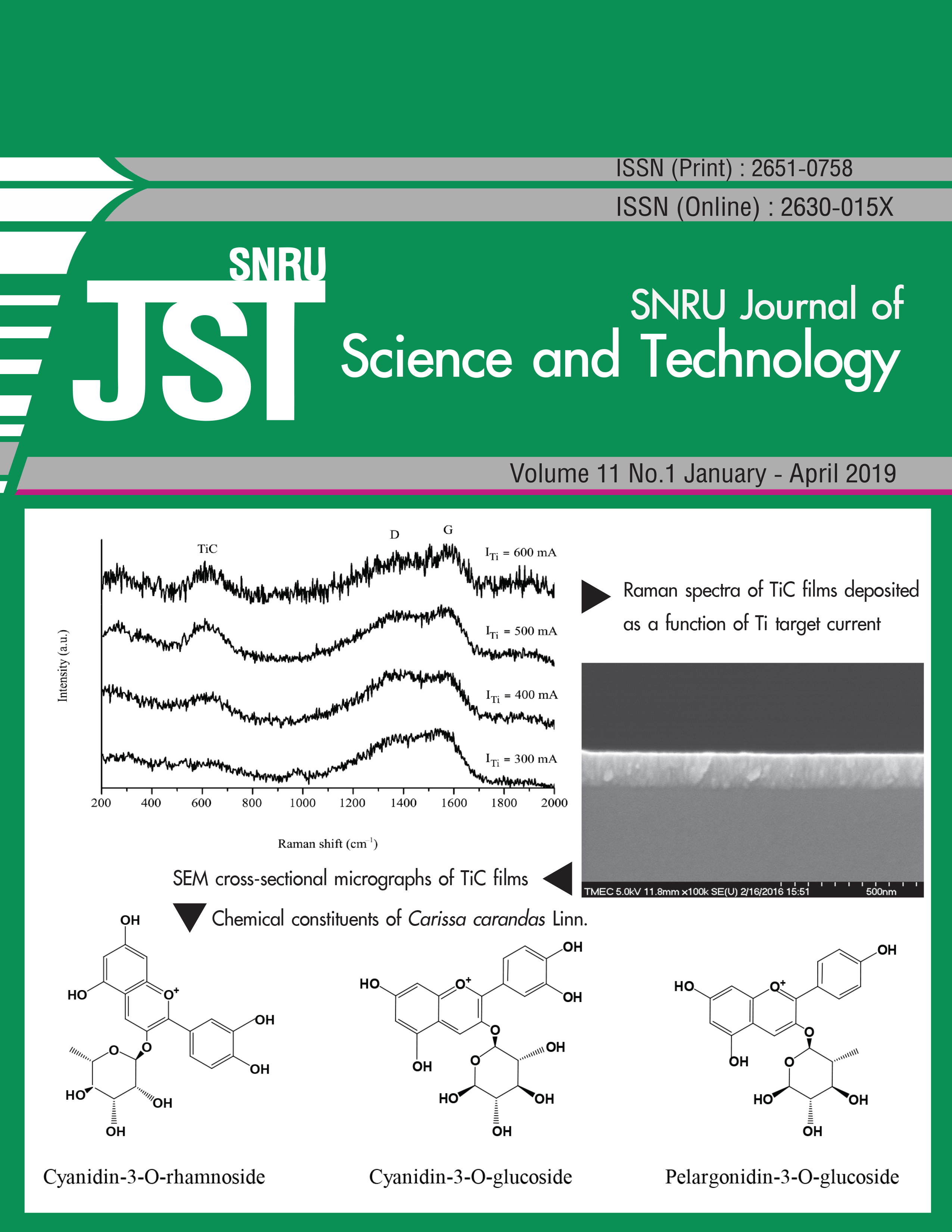The Study of Free radical Scavenging, Total Phenolic Contents and Tyrosinase Inhibition Activity of Crude Extract from Carissa carandas Linn.
Keywords:
Phenolic contents, antioxidant activity, tyrosinase inhibitionAbstract
The present study investigated the changes in total phenolics contents (TPC), tyrosinase inhibition and antioxidant capacity of Carissa carandas Linn. extracts. The effects of different solvent extraction (70% ethanol and 100% ethanol) on the phenolic profile of Carissa carandas Linn. fruit and their tyrosinase inhibition and antioxidant activity were studied. The result showed that the amount of crude extracts from 70% ethanol and ethanol was 5.76 and 2.54% respectively. In fact, the 70% ethanol extract showed the highest content of phenolic compounds at 28.21 mg GAE g–1 crude extract. Results indicated that the ethanol extract exhibited higher DPPH free radical scavenging activity than 70% ethanol extract. ABTS radical scavenging activity and ferric reducing power of 70% ethanol extract showed the highest antioxidant activities of 82.54% and 3494.80 mg g–1 crude extract, respectively. The percentage of tyrosinase inhibition was examined dopachrome method, the 70% ethanol extract exhibited the higher tyrosinase inhibition at 77.65%. The preliminary findings reveal that 7 0 % ethanol extract has a high potential to be used as a natural skin whitening agent in cosmetic products.
References
[2] J. Sueprasarn, T. Pirak, S. Riebroy, The Study of Optimal Condition for Anthocyanins Extraction from Karanda (Carissa carandas Linn), 51st Kasetsart University Annual Conference: Agricultural Extension and Home Economics, Agro-Industry, Kasetsart University. 5 – 7 February 2013, 193 – 200.
[3] A. Sarma, P. Sarmah, D. Kashyap, S. Dutta, M. Mahanta, Antioxidant activity and nutraceutical property of the fruits of an Ethno-medicinal plant : Carissa carandas L. found in Brahmaputra
valley agro-climatic condition, J. Pharm. Sci. & Res. 7 (2015) 55 – 57.
[4] J. The antioxidant of Sauropus androgynus (L.) Merr. extracts, Ubonratchatani University, Ubonratchatani, 2012.
[5] A. Blainski, G.C. Lopes, J.C. Mello, Application and Analysis of the Folin Ciocateu Method for the Determination of the Total Phenolic Content from Limonium Brasiliense L., Molecules, 18 (2003) 6852 – 6865.
[6] V. Devmurari, P. Shivanand, N. P. Jivani, A review : Carissa Congesta : Phytochemical constituents, traditional use and pharmacological properties, Review Article. 3(6) (2009) 375 – 377.
[7] R.Re,N.Pellegrini,A.Proteggente,A.Pannala,AntioxidantactivityapplyinganimprovedABTS
radical cation decolorization assay, Free Rad. Biol. Med. 26 (1999) 1231 – 1237.
[8] N. Liang, D. D. Kitts, Antioxidant Property of Coffee Components: Assessment of Methods that
Define Mechanisms of Action, Molecules. 19 (2014) 19180 – 19208.
[9] C.N. Kunyanga, Total phenolic content, antioxidant and antidiabetic properties of methanolic
extract of raw and traditionally processed Kenyan indigenous food, LWT-Food Science and Technology. 45 (2012) 269 – 276.









